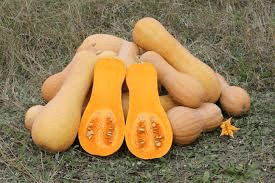
Butternut squash is an excellent source of vitamins A and C and some of the B vitamins. It is also a great source of fiber, potassium, and magnesium. It is fat free, cholesterol free and sodium free. It has a rich golden-yellow flesh with an excellent smooth texture. Butternut squash is a wonderful keeper. Store whole squash at room temperature. Wrap cut pieces in plastic; these may be kept in the refrigerator for up to five days.
To prepare, wash outside of squash thoroughly, cut in half lengthwise and remove seeds. Butternut squash can be baked, roasted, steamed, braised, sauteed or pureed. This is the perfect squash for soups and stews.
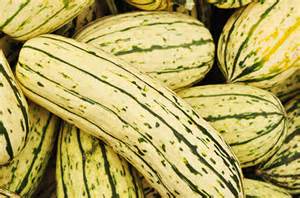
Named for its delicate tender skin, the delicata squash measures about 5-6 inches in length and 2-3 inches in diameter. It has a long narrow shape and a grooved skin with lines that run the length of the squash. The skin is creamy yellow with green, and sometimes orange, vertical stripes. When cooked, the flavor is sweet, rich, and moist, similar to a sweet potato.
The thin skin of a delicata is easy to slice and is also edible when cooked, so it does not to be peeled prior to eating. Since the delicata holds its shape well through cooking, it is an excellent choice for stuffing with grains, meats or cheese.
Delicata squash provides vitamins A and C, some of the B-vitamins, potassium, and fiber. The deeper yellow and orange flesh provides the most beta carotene.
Delicata are in the winter squash family, so they keep well at room temperature. However, since the skin is thinner than some of the other winter varieties, use your delicata sooner than later.
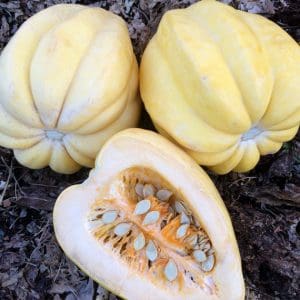
We are all familiar with the basic green acorn squash domesticated by Native Americans. White acorn squash is a relatively new variety developed in the 1980’s by squash collector and expert Glenn Drowns. When mature, the appearance of the outer skin is a creamy white to pale yellow color. The yellowish-gold flesh has a smooth delicate texture with a mild sweet taste. White acorn squash provides Vitamin C, Vitamin B6, potassium, magnesium, thiamin and dietary fiber. It can be baked, grilled, roasted or broiled. For individual servings, try slicing in half and stuffing. Since white acorn is a winter squash, it stores well in a cool dry place. For best flavor, use within one month of harvest.
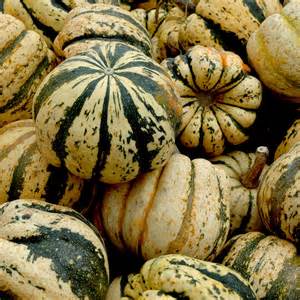
A small winter variety, sweet dumpling squash are tiny, round and plump, averaging 4 inches in diameter and usually weighing less than one pound. Most often the skin is white, mottled with green, yellow and orange markings. They resemble a miniature pumpkin in appearance, due to the scalloped hollow lobes outlining them. The flesh is moist, tender, orange in color, and offers a mild sweet flavor.
This squash is difficult to peel, so most often it is roasted or baked with the skin on. It’s delicious halved and stuffed with meats, cheeses, grains or other vegetables. Sweet dumpling squash provide vitamins A and C, some of the B vitamins, and are a good source of fiber. One cup of cooked squash contains about 100 calories. As with all hard winter variety squash, sweet dumpling will keep well at room temperature for weeks.
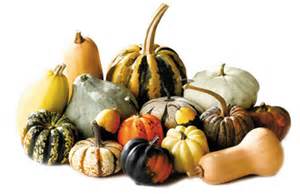
In this week’s share our members will receive a variety of edible ornamental squash–no two will be the same. Don’t worry if they look a little strange and unusual–they are absolutely edible! We suggest that at first you may want to enjoy them as part of your fall decor, and then later you can bake them as you would any other squash.
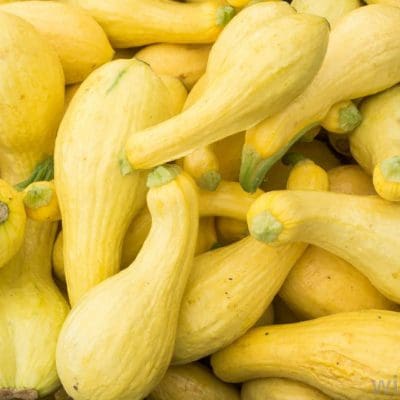
Yellow summer squash is a welcome staple every summer. Low in calories, easily digested, and very nourishing, it adapts easily to a variety of recipes. Since summer squash is approximately 94 percent water, it’s a wonderful replacement of lost fluids on those simmering July days. It is also a great source of vitamins A and C, potassium and calcium.
Summer squash dehydrates quickly, so store it in a plastic bag or hydrator drawer in the refrigerator for up to one week. Remember if damaged or bruised it will deteriorate very quickly.
To prepare, rinse clean and wipe dry with a cloth or paper towel. No need to peel, the skin is edible.
To serve, cut into sticks or rounds and add to a colorful tray of other fresh veggies. Serve with your favorite veggie dip. Grate or thinly slice into green salads, or shred to make a squash slaw. Summer squash can be cut into chunks or thick slices and added to summer soups or stews. To retain texture, add toward the end of cooking time. It is a colorful addition to a stir-fry; again, add at the end of cooking time. Try grilling summer squash halves. Baste with a little olive oil, grill about 3-4 minutes on the hottest part of the grill, then move to a cooler part of the grill and grill 8-10 minutes more. They are also excellent for shish kabobs.
Summer squash may be cooked, pureed, and then frozen to use as an addition or a base for winter soups. Freeze in an air tight container.
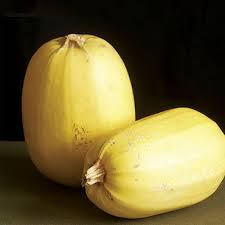
This variety of winter squash is large, oval and yellow, and looks similar to a melon. It is unique among squash because when cooked, its yellowish flesh separates into long strands that resemble pasta. Spaghetti squash provides vitamins A and C and some of the B vitamins. It is also an excellent source of fiber.
To prepare, slice in half lengthwise, scoop out seeds and bake, cut side up, in oven or micro-wave. Add a little water to prevent drying out and hasten cooking. Flesh is done when it is easily scooped out in spaghetti-like strands. It can also be cooked whole; be sure to pierce the skin in several areas to allow steam to escape. Some people find it’s easier to soften the whole spaghetti squash for a few minutes in the micro-wave. Remove, cut in half, scrape out the seeds, and resume cooking. Experiment to see what technique works best for you.
Serve with a little olive oil, salt and pepper to taste. Or try butter and parmesan cheese, or of course, your favorite spaghetti sauce.
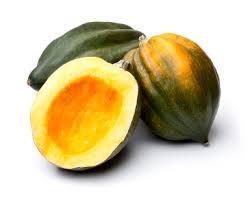
Acorn squash is an old standby in winter squash and for many people, their first introduction to squash in general. Containing significant levels of vitamins A and C, thiamin, pantothenic acid and other B-family vitamins, acorn squash also provides many minerals. Some of these are potassium, manganese, phosphorus and calcium. Acorn squash is also a rich source of dietary fiber, aiding in digestion and helping to regulate the levels of blood sugar in the body.
Acorn squash can be stored at room temperature for up to one month. It is so easy to bake. After washing the outside, slice in half lengthwise, scoop out the seeds and fiber, and place face down in a baking dish. Add a little water to avoid drying out and to speed up the cooking process. Bake at 350 degrees for 50-60 minutes, until easily pierced with a fork. Serve with a little butter, salt and pepper. Or try seasoning with your choice of one of the following:
Sweet spices, such as cinnamon and nutmeg
Sharp cheese, such as Parmesan or Asiago
Curry powder
Chopped rosemary
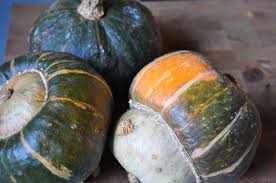
One of the most popular winter squash varieties, buttercup squash has a sweet and creamy orange flesh. Containing more than 200% of the recommended daily amount of vitamin A, it is also high in vitamins C and B. An added benefit is that buttercup squash is an excellent source of dietary fiber.
To prepare, wash the outside thoroughly. Cut in half and remove the seeds and stringy pulp. Place cut side down in a baking dish, add 1/2 cup of water and cover with aluminum foil. Bake at 375 degrees for 30 minutes or until tender. Buttercup squash can also be easily micro-waved. Follow the above instructions, cover with wax paper, and micro-wave on High at 5-minute intervals until tender. Serve with butter , salt and pepper or brown sugar. Try a little parmesan cheese for variety.
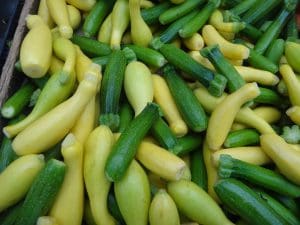
This week some of the shares will receive yellow summer squash and others will receive zucchini. The storage and preparation techniques will be similar for both of them.
Yellow summer squash is a welcome staple every summer. Low in calories, easily digested, and very nourishing, it adapts easily to a variety of recipes. Since summer squash is approximately 94 percent water, it’s a wonderful replacement of lost fluids on those simmering July days. It is also a great source of vitamins A and C, potassium and calcium.
Summer squash dehydrates quickly, so store it in a plastic bag or hydrator drawer in the refrigerator for up to one week. Remember if damaged or bruised it will deteriorate very quickly.
To prepare, rinse clean and wipe dry with a cloth or paper towel. No need to peel, the skin is edible.
To serve, cut into sticks or rounds and add to a colorful tray of other fresh veggies. Serve with your favorite veggie dip. Grate or thinly slice into green salads, or shred to make a squash slaw. Summer squash can be cut into chunks or thick slices and added to summer soups or stews. To retain texture, add toward the end of cooking time. It is a colorful addition to a stir-fry; again, add at the end of cooking time. Try grilling summer squash halves. Baste with a little olive oil, grill about 3-4 minutes on the hottest part of the grill, then move to a cooler part of the grill and grill 8-10 minutes more. They are also excellent for shish kabobs.
Summer squash may be cooked, pureed, and then frozen to use as an addition or a base for winter soups. Freeze in an air tight container.
Zucchini is one of the many varieties of summer squash. They are excellent in replacing lost fluids on hot summer days as they are approximately 94 percent water. Low in calories and a great source of vitamins A, C, potassium and calcium, zucchini is easily digested and nourishing.
Remember that summer squash dehydrates quickly. Store in a plastic bag or refrigerator hydrator drawer for up to 1 week.
Anyone who has used or grown zucchini knows how versatile it is. The possibilities are endless! Use raw in veggie trays, with a dip, or grated or sliced into green salads. Steam/saute’ alone or with other vegetables. Serve with butter and a sprinkle of herbs or Parmesan cheese. Try grilling them. And don’t forget zucchini bread, muffins, or cake.
Did you know?
- There are two different types of squash: summer and winter squash.
- Summer squash, like zucchini or pattypan squash, have thin skins and can be eaten whole — skin, seeds, and all.
- Winter squash like butternut squash have robust skins that aren’t usually edible, much harder flesh, and their seeds generally need to be removed before eating.
- Most winter squash have long shelf lives and can last in a cool, dry place for weeks or even months!
- No, spaghetti squash doesn’t taste like spaghetti. It gets its name from the fact that, when it’s cooked, its flesh separates into shapes that look remarkably like noodles.
- Florida is the biggest squash producing state, followed by New York, California and North Carolina.
- The United States is the world’s biggest importer of squash.
- Squash is an excellent source of vitamin A and vitamin C. a one-cup serving of squash provides about half of the daily requirements of vitamin C, and 4.5 times the daily requirement of vitamin A.
- Squash is an excellent source of potassium and manganese. It’s also a good source of calcium, magnesium, vitamin E, thiamin, niacin, vitamin B6, and folate.
- Pahl Farms grow over 8 different varieties of squash on over 40 acres.




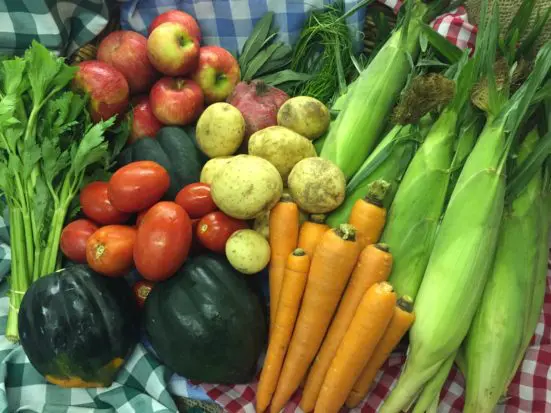
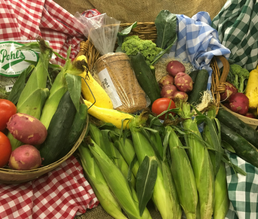
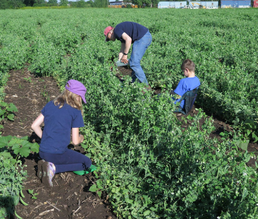
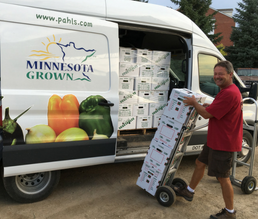





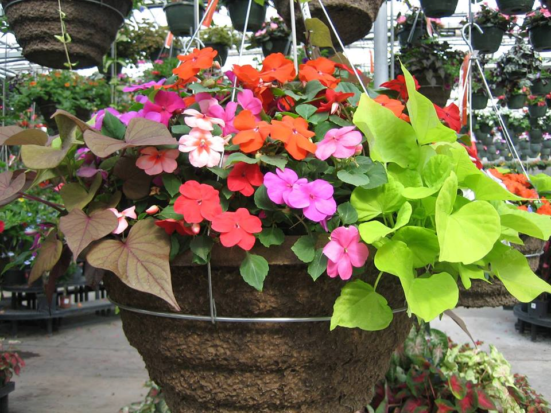
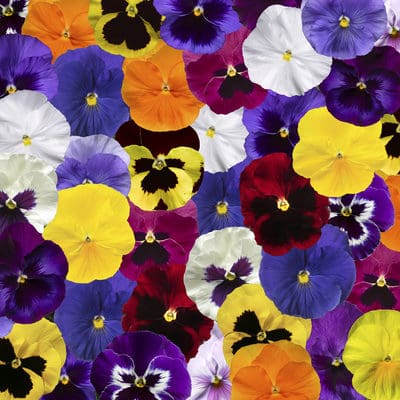




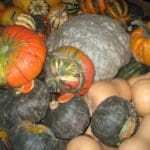
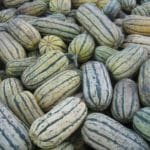
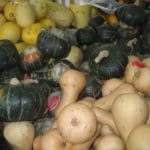
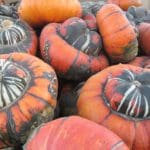
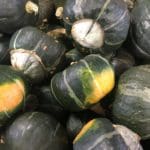
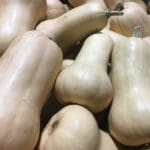
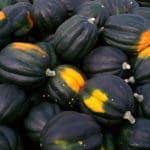
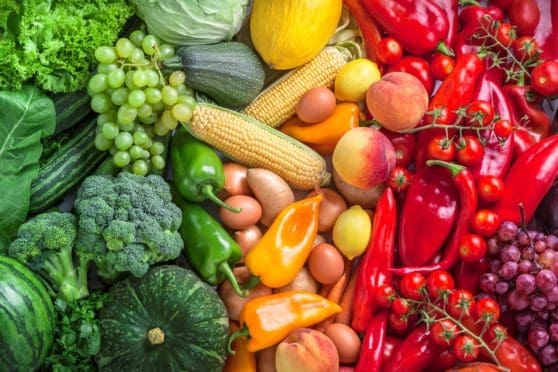
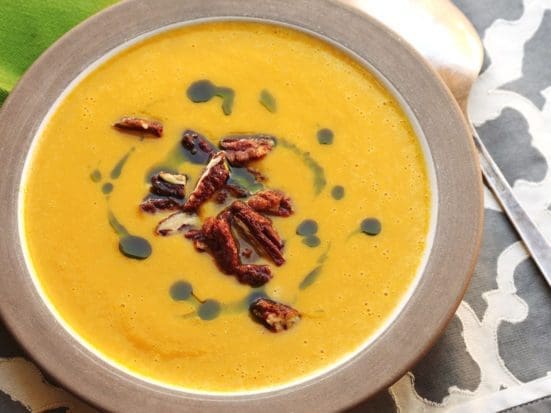
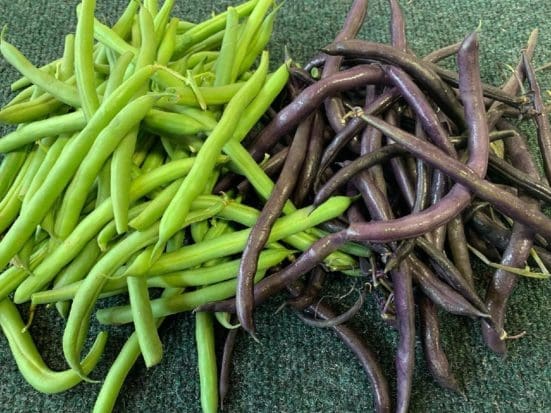

0 Comments